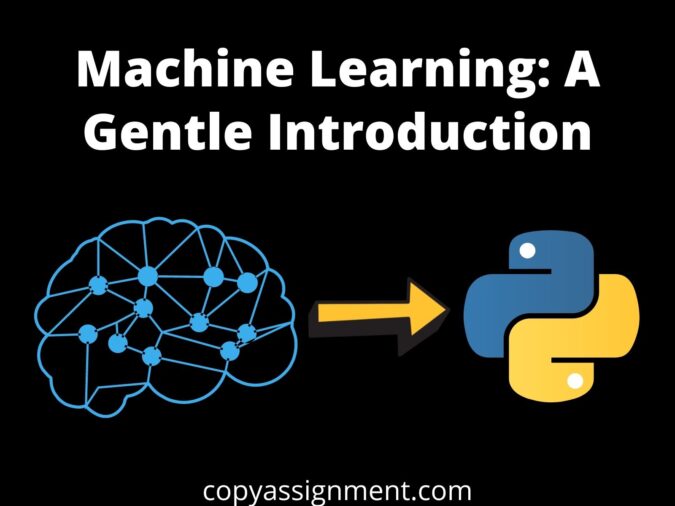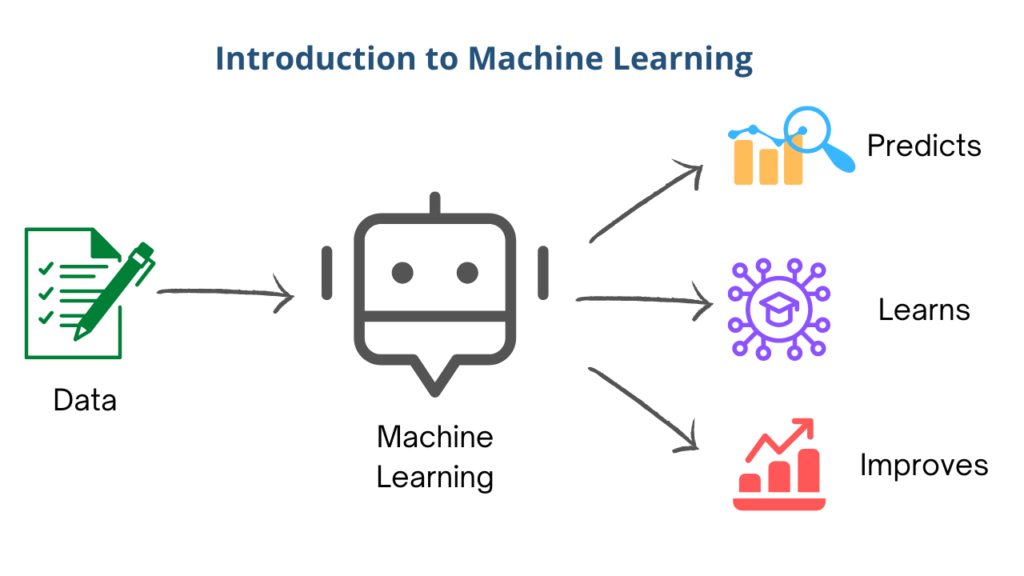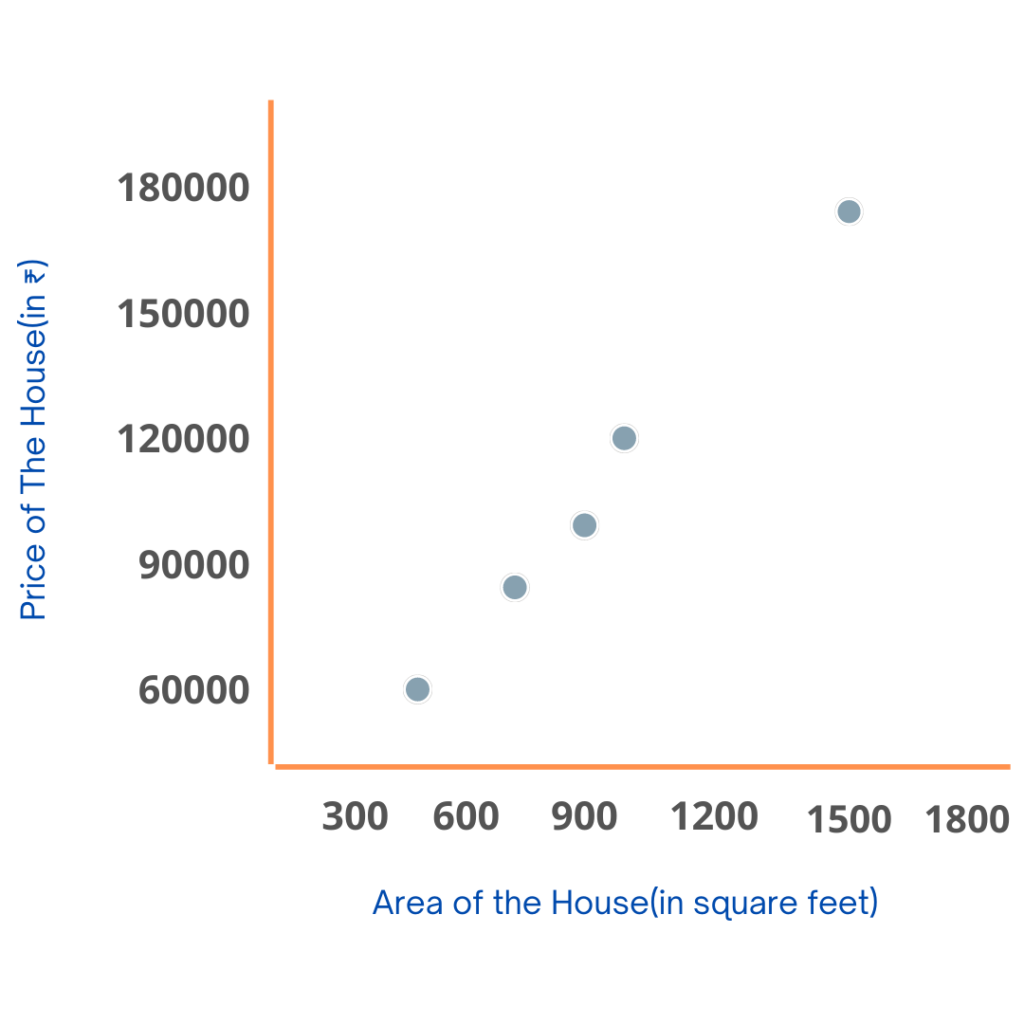
Introduction to Machine Learning
Machine Learning is probably one of the most interesting and hyped branches of computer science. The thing that separates humans from machines is the fact that humans learn from their experiences. But is it possible to make a machine learn? And The answer is Yes! It is possible through Machine Learning. But, What is ML? What does it do? And what makes Machine Learning so popular? Don’t worry we’ve got you covered. But before you proceed with the topic, we suggest you have an overview of Python from our Python Tutorial Series.
What is Machine Learning?
Machine Learning is a subdomain of Artificial Intelligence where humans train the model to learn, analyze and make decisions. The Machine Learning model improves its efficiency over time by learning from its experience. Data is the lifeline of ML, and the quality and quantity of data can significantly affect the performance of your model. That’s why it a good to know how to manipulate data and build a suitable model with the data.

How does Machine Learning work?
Let’s understand the working of the Machine Learning model with an example. Consider there are 5 houses with the following specification.
| Area of the House(in square feet) | Price of The House(in ₹) |
| 1000 | 120000 |
| 500 | 60000 |
| 800 | 80000 |
| 900 | 100000 |
| 1500 | 180000 |
Let’s assume, that the price of a house is solely determined by the area of the House. We have the area of the five houses and their corresponding price. So, what would the price of a house with an area of 1200 square feet be? Based on the data we have taken above, we can say that the price falls somewhere between ₹140000 to ₹150000. After thinking for a while we might be able to pinpoint the price too. But how will you make a machine make a guess?
To understand that let’s plot the data on a graph

Now once the machine has this data plotted on the graph. The ML model will improve itself and find the best fit for the line in the curve such that each point on the line, i.e. (x,y) where x is the area of the house and y is the predicted price of that house, this line will be fitted in the plot in such a way that the predicted values are nearer to the actual values. The Line will look something like this.

Now for the above line the value corresponding to x(Area) = 1200 is y(Price) = 140451.
The above method is something called Linear Regression. We’ll learn more in this series. But how did our model learn that this particular line is the best fit? Now before learning how did it find the line let’s understand what a line is? A Line is exactly what it says, A LINE. But Mathematically, Line is an equation of the form
y = mx + c
Now, what the model will do is it’ll start with random values of m and c and since these are random values it could be anything, let’s say m = 300 and c = 9000.
Now the line will take our data as input and update the value of m and c such that the line is the best fit for the scatter plot. The in-depth math on how to get the best values for m and c will be explained in the linear regression section but to feed your curiosity we find the best m and c (or sometimes referred to as a and b) by a method called Ordinary Least Squares.
What makes Machine Learning so special?
Now you might be wondering what’s so special about ML, all it is is just mathematics at play. And you are mostly right, Machine Learning is Math at its core. But even though the above algorithm is the most basic one, the fact that the same algorithm can improve itself to fit the given data is what makes ML special. You just feed the data to the algorithm and the algorithm will improve. And that is why ML is special, you don’t need to redesign your algorithm according to data, you just need the data and leave the improvement to ML.
Many of today’s market-leading brands such as Facebook, Google, Netflix, and Amazon, have Machine learning a central part of their operations. Machine learning has several real-time applications that drive many businesses and results in time and money savings. In particular, there is a tremendous impact occurring within customer care and product recommendations, whereby machine learning is allowing people to get things done more quickly and efficiently.
Applications of Machine Learning
The applications of Machine learning systems are also widespread in the fields of health care, banking, e-commerce, etc., Some of the widely used applications are Email spam filtering, Web search results, Pattern and Image recognition, Video recommendation, Fraud detection, Malware threat detection, Business process automation (BPA), and so on. Most social media platforms and content-delivering networks use Machine Learning algorithms to provide a more personalized and enjoyable experience.
Prerequisites to becoming a Machine Learning Engineer
- Basic knowledge of programming and scripting languages.
- Knowledge of programming languages like Python or R(Python is recommended)
- Intermediate knowledge of statistics and probability
- Knowledge of data structures and algorithms.
Conclusion
It is no doubt that Machine Learning becoming a more widely accepted and adapted technology in many fields. In this article, we have got a brief introduction to Machine Learning and its types. As a next step, you can check out the important steps to building a machine learning model.
Also Read:
- Flower classification using CNN
- Music Recommendation System in Machine Learning
- Top 15 Python Libraries For Data Science in 2022
- Top 15 Python Libraries For Machine Learning in 2022
- Setup and Run Machine Learning in Visual Studio Code
- Diabetes prediction using Machine Learning
- 15 Deep Learning Projects for Final year
- Machine Learning Scenario-Based Questions
- Customer Behaviour Analysis – Machine Learning and Python
- NxNxN Matrix in Python 3
- 3 V’s of Big data
- Naive Bayes in Machine Learning
- Automate Data Mining With Python
- Support Vector Machine(SVM) in Machine Learning
- Convert ipynb to Python
- Data Science Projects for Final Year
- Multiclass Classification in Machine Learning
- Movie Recommendation System: with Streamlit and Python-ML
- Getting Started with Seaborn: Install, Import, and Usage
- List of Machine Learning Algorithms
- Recommendation engine in Machine Learning
- Machine Learning Projects for Final Year
- ML Systems
- Python Derivative Calculator
- Mathematics for Machine Learning
- Data Science Homework Help – Get The Assistance You Need
- How to Ace Your Machine Learning Assignment – A Guide for Beginners
- Top 10 Resources to Find Machine Learning Datasets in 2022
- Face recognition Python
- Hate speech detection with Python


